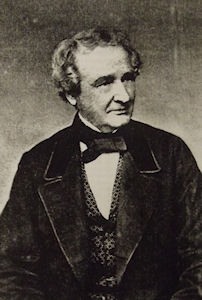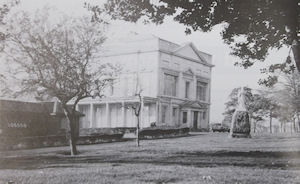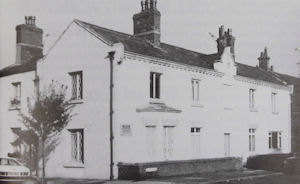 |
Harold Littledale |
More than one hundred and sixty years ago, before the jerry-builders smothered the place with row upon row of terraced housing, Liscard in Wallasey boasted an agricultural enterprise of mational repute:
'It would be unpardonable, therefore, to take leave of Liscard without particularly referring to one...who has createdd a garden where a wilderness formerly prevailed, and clothed with verdure and luxuriance a district in which the dock, the thistle, and the rush, had before held undisputed swat -- Harold Littledale of Liscard Hall, and of Liverpool, of which town he is one of the principal merchants.'
So wrote William Mortimer in his description of Wallasey in 1847. Who was this man Littledale, and what did he create in this former "wilderness"?
 |
Liscard Hall, Central Park |
Harold Littledale married Margaret Tobin, daughter of Sir John Tobin of Liscard Hall (formerly the School of Art which was demolished in 2008), the eminent Liverpool merchant and shipowner. On Tobin's death in 1851, Littledale (also a principal Liverpool merchant) inherited Liscard Hall and its extensive lands. Littledale was no agriculturist, but he did have money, and he set about using his resources to create 'a model dairyfarm, perhaps one of the finest establishments of the kind in the kingdom', witn no expense spared. Under the guidance and direction of William Torr, one of the nest practical farmers of the day, he set up a farm which was to be 'almost daily visited by everyone who takes an interest in agriculture'.
A railway traveller, Samuel Sidney, visited the place in the 1850s and described it as follow:
'No expense has been spared in obtaining the best possible workmanship and implements, but there has been no waste in foolish experiments... the buildings, including a residence, cottages and gardens, occupy about four acres, and the farm consists of 350 acres of strong clay land, which has been thoughly drained and profusely manured, with the object of getting from it the largest possible crops. Eighty cows are kept in the shippons, ranged in rows, facing the paths by which they are all fed at the head. They are curry-combed twice a day, and the dung is removed constantly as it falls. Mr. Littledale makes use of moveable wooden railway, carted by a donkey in a light waggon, to draw root drops from a field of heavy land.'
A 'noble lord', visiting the farm about the same time, described the cow stalls as being 'as well ventilated as Her Majesty's stables at Buckingham Palace', and the dairy as containing 'a marble fountain, which would put to shame those exquisite specimens of national taste recently erected in Trafalgar Square'.
A steam engine was used to thrash the corn, divide the grain into three qualities, grind the corn into flour, cut dry and green food for the cattle, carry it to the steaming house, crush beans and oats, mix food the pigs, and churn the butter. The same noble lord mentioned above was particularly impressed by this piece of machinery: 'If some of our revered ancestors, the gentlemen farmers of a hundred years ago, could rise from their graves, and see this leviathan engine at work, doing the labour of some dozen of hands by machinery, they would, indeed, be scared out of their senses'.
Harold Littledale died in 1889, by which time the 'Model Farm' was presumably being engulfed by the rising tide of housing, for although the Farm is shown on the Ordnance Survey map of 1874, by the 1898 revision many of the fields had been converted to streets, and by the time of the 1908 revision all traces had disappeared.
 |
Old Farm House, at the corner of Eldon Road and Rullerton Road |
Woods and Brown, the Wallasey historians, wrote in 1929 that 'the one-time entrance is Rullerton Road and the house still stands at the corner of Eldon Road engulfed by urban development'. Difficult to believe that 'so sylvan was the district that less than a hundred years ago a nightingale was said to have been heard singing in Littledale's woods'.
Further reading :- Wallasey Mishaps - Liscard Hall
Featured sites
- Non Gamstop Casinos
- Casino Not On Gamstop
- UK Casinos Not On Gamstop
- Non Gamstop Casinos UK
- Sites Not On Gamstop
- Sites Not On Gamstop
- Casinos Not On Gamstop
- Casinos Not On Gamstop
- Casinos Not On Gamstop
- Non Gamstop Casino UK
- Casinos Not On Gamstop
- Non Gamstop Casino
- UK Online Casinos Not On Gamstop
- UK Online Casinos Not On Gamstop
- Non Gamstop Casinos
- Casino Sites Not On Gamstop
- Casinos Not On Gamstop
- Casinos Not On Gamstop
- Best Betting Sites
- Casinos Not On Gamstop
- Gambling Sites Not On Gamstop
- Betting Sites That Are Not On Gamstop
- Non Gamstop Casinos UK
- UK Online Casinos Not On Gamstop